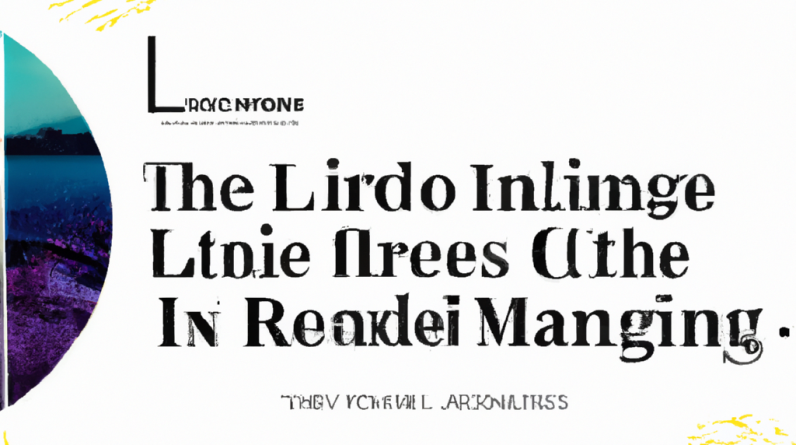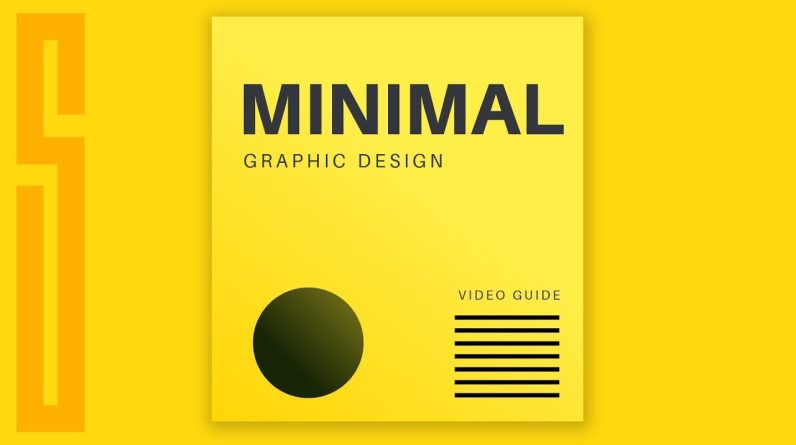
Thoroughness and Creativity: Balancing Elements in Good Design is an article that explores the influence of Dieter Rams, an influential industrial designer, and his Ten Principles for Good Design. It questions the blind commitment to these principles and argues that they may be hindering progress in sustainable design. The article delves into the principle of good design being honest and how designers may not always be completely honest in their designs. It also discusses the concept of truth to materials and its relation to the use of cellulose acetate in eyewear frames, showcasing the complexity of honesty in design. The article emphasizes the importance of perceived value and emotional response in design and how it contributes to usability and user experience. It examines the role of visual trickery and presentation in selling design ideas, suggesting that designers are like salesmen. Ultimately, the article encourages readers to consider the balance between thoroughness and creativity, and to think critically about the principles of good design.
In the article “Minimalism is Getting Absurd: Updating Dieter Rams’ 10 Principles,” the author challenges the blind adherence to Dieter Rams’ principles of good design. The author argues that the pursuit of minimalism in design may not always be the best approach and that it can complicate functionality and limit user interaction. The article highlights the importance of considering the aesthetic and emotional aspects of design, as well as the impact on the environment. It calls for a balance between thoroughness and creativity in design, and emphasizes the need for designers to prioritize respect for all stakeholders involved.
Table of Contents
Thoroughness and Creativity: Balancing Elements in Good Design

Introduction
Design plays a crucial role in our everyday lives, from the products we use to the environments we inhabit. It has the power to shape experiences, evoke emotions, and solve problems. When it comes to good design, there are often two key elements to consider: thoroughness and creativity. These elements, although seemingly opposite, can actually work together to create impactful and successful designs. In this article, we will explore the balance between thoroughness and creativity in design, and how it can lead to innovative and meaningful solutions.
The Influence of Dieter Rams
Before diving into the discussion of thoroughness and creativity, it is essential to acknowledge the influence of Dieter Rams, whose Ten Principles for Good Design have informed and inspired countless designers. Rams, an influential industrial designer, believed in the importance of simplicity, functionality, and honesty in design. His principles, including “good design is honest” and “good design is as little design as possible,” have become guiding principles for designers worldwide.
Questioning Blind Commitment to Principles
While Rams’ principles have undoubtedly shaped the field of design, it is crucial to question the blind commitment to these principles. As designers, it is important to challenge established norms and explore new possibilities. Blindly adhering to principles without critically evaluating their relevance and effectiveness may hinder progress and innovation in design.
Honesty in Design
One of Rams’ principles, “good design is honest,” implies that good design should be transparent and truthful. However, it is essential to consider the complexity of design and the role of designers as influencers. Designers have the ability to subtly shape perceptions and emotions through their designs. This may involve highlighting positive features and downplaying negative aspects, much like an Instagram filter for products. While this may deviate from a traditional definition of honesty, it can enhance the user experience and add value beyond mere functionality.
Truth to Materials
Rams’ principle of “truth to materials” promotes authenticity and discourages the manipulation of materials to imitate others. For example, the use of cellulose acetate in eyewear frames to mimic tortoise shell may be seen as deceptive from a purely material-driven perspective. However, considering the environmental impact and the need to protect endangered species, the use of cellulose acetate as an alternative may be more ethical and sustainable. Balancing material authenticity with environmental considerations is a crucial aspect of design.
Perceived Value and Emotional Response
Good design goes beyond functionality; it should also create value and evoke emotional responses. The perceived value of a design, influenced by factors like aesthetics and emotional appeal, can greatly impact how users interact with and appreciate a product. For example, a calculator designed with harmonious spacing, glossy buttons, and strategic color accents can evoke feelings of precision and clarity, elevating the user experience. The emotional response and perceived value of a design justify its price and go beyond objective truth.

Value and Meaning in Design
Designers have the power to imbue products with value and meaning beyond their functional utility. A design that tells a story or symbolizes certain ideals can create connections and evoke emotions in users. While this approach may deviate from traditional notions of honesty, it adds depth and significance to a design. The pursuit of value and meaning should be balanced with the responsibility to create useful and functional products.
Visual Trickery in Selling Design Ideas
Designers often employ visual trickery and presentations to sell their ideas effectively. Just as salesmen use words to convince customers, designers use visual representations and prototypes to persuade stakeholders. Concepts can be visually enhanced with flattering lighting, well-presented sketches, or carefully placed physical prototypes. While this may raise questions about the honesty of the design process, it is an integral part of effectively communicating ideas and securing support for designs.
Mention of Shaper 3D
In the realm of design, innovation and creativity are often facilitated by tools and software. Shaper 3D is one such software package that enables designers to create and showcase 3D models conveniently. With its intuitive user interface and compatibility with the iPad, Shaper 3D allows designers to bring their ideas to life quickly and efficiently. Its affordability and accessibility make it a valuable tool for designers, engineers, and hobbyists alike.

Misinterpretation of ‘As Little Design as Possible’
Rams’ principle of “good design is as little design as possible” has often been misinterpreted. This principle has led to a focus on visual simplicity, sometimes at the expense of functionality and usability. Overzealous adherence to minimalism can complicate a product’s function or limit user interaction. The pursuit of simplicity should strike a balance with the user’s needs and the overall effectiveness of the design.
Complications of Minimalist Design
Minimalist design, while visually appealing, can also lead to exclusivity and higher production costs. The simplicity and refined aesthetic associated with minimalist design can create a perception of luxury and refinement, making it inaccessible to a broader audience. Additionally, the minimalist approach often requires precision and attention to detail, which can drive up production costs. Designers must consider the implications of minimalist design in terms of accessibility and feasibility.
Aesthetic and Emotional Aspects of Design
While functionality and usability are crucial, design should not neglect the aesthetic and emotional aspects. The visual appeal and emotional response to a design greatly contribute to its overall success. Designers have the ability to create products that resonate with users on an emotional level, enhancing their experience and deepening their connection with the design. Balancing aesthetics, usability, and emotional impact is essential for creating holistic and impactful designs.
Minimalism and Impact on the Environment
Designers have an ethical responsibility to consider the environmental impact of their creations. Minimalist design, with its emphasis on simplicity and reduction, aligns with sustainable principles. By embracing minimalism, designers can reduce waste, conserve resources, and promote regenerative processes. However, it is important to avoid prioritizing visual minimalism over sustainable practices, as true sustainability requires a comprehensive and thoughtful approach.
Thoroughness and Creativity in Design
Thoroughness and creativity are not mutually exclusive; in fact, they can enhance one another in design. Thoroughness ensures that a design meets functional requirements, is user-friendly, and addresses potential challenges. On the other hand, creativity injects novelty, innovation, and unexpected elements into a design. Balancing thoroughness with creativity allows for designs that are both reliable and inspiring, pushing the boundaries of what is possible.
Obtrusive Designs Can Fulfill Needs
Not all designs need to be unobtrusive or blend into the background. Obtrusive designs, when executed thoughtfully, can fulfill the user’s needs and desires. For example, bold and attention-grabbing designs in fashion or technology can serve as expressions of individuality or signify status. Designers must recognize that not all users prioritize subtlety or inconspicuousness, and there is value in meeting diverse user preferences.
Varied Definitions of Usefulness
The definition of “usefulness” varies among different individuals and contexts. Designers must consider the specific needs, desires, and goals of their target audience when determining the usefulness of a design. What may be deemed useful for one user may be perceived differently by another. Understanding and catering to these varied definitions of usefulness is essential for creating designs that resonate with users.
Consideration of the Larger System
Design does not exist in isolation but as part of a larger system, including social, cultural, and environmental considerations. While focusing on individual designs is important, designers must also zoom out and take a holistic approach. This involves examining the impact of their design choices on society, the environment, and stakeholders at large. By considering the larger system, designers can create designs that are responsible, sustainable, and beneficial to all.
Respect for Stakeholders
In the process of design, it is crucial to prioritize respect for all stakeholders involved. This includes designers, engineers, factory workers, end-users, and the environment. Designers must ensure that their designs consider the needs, values, and well-being of all stakeholders. By embracing a holistic and inclusive approach, designers can create designs that are ethical, empathetic, and socially responsible.
In conclusion, thoroughness and creativity are essential elements in good design. While the influence of Dieter Rams and his principles cannot be overstated, it is important to question and challenge these principles to drive progress and innovation in design. Designers must balance honesty with the ability to create value and emotional responses in their designs. They should consider the impact on the environment and prioritize sustainable practices. Thoroughness and creativity can coexist, creating designs that are reliable, inspiring, and considerate of the larger system. By respecting all stakeholders and considering their needs, designers can create designs that are ethical, empathetic, and impactful.







